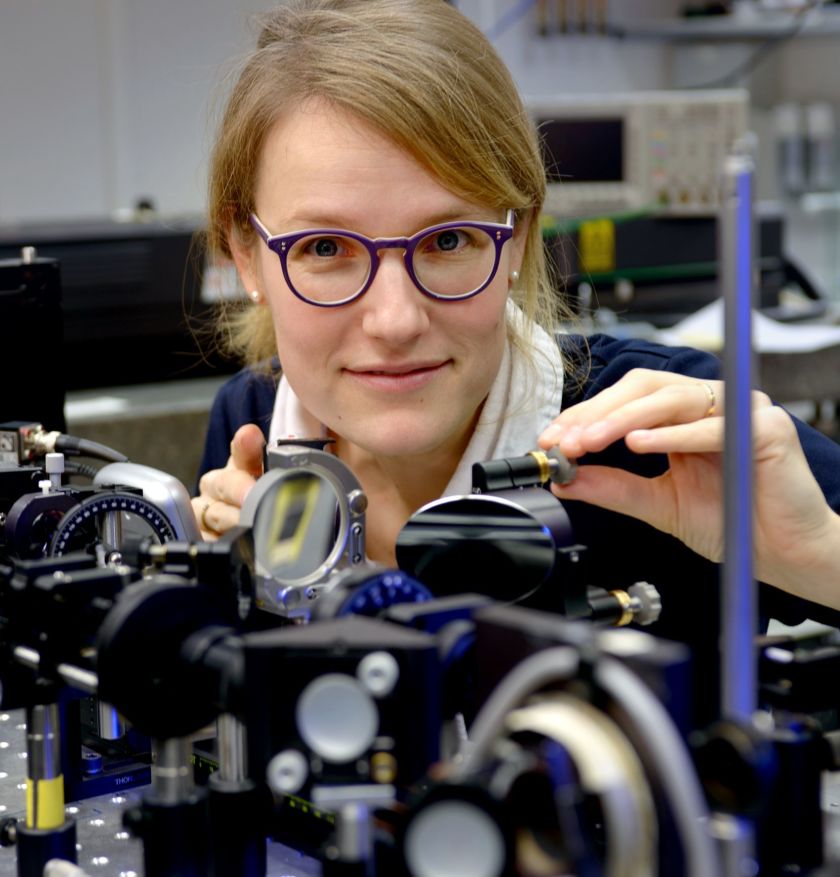Renske van der Veen heads new department "Atomic Dynamics in Light-Energy Conversion"

Renske van der Veen has a lot of experience with ultrafast x-ray measurements. © Irene Böttcher-Gajweski/MPIBC
From June 2021, Dr. Renske van der Veen is setting up a new research group at HZB. The chemist is an expert in time-resolved X-ray spectroscopy and electron microscopy and studies catalytic processes that enable the conversion of solar energy into chemical energy.
Dr. Renske van der Veen successfully obtained a Helmholtz Funding of first-time professorial appointments of excellent women scientists (W2/W3), whereupon the HZB has already initiated an S-W2 appointment procedure at TU Berlin. She has 14 years of experience in the field of ultrafast X-ray methods. "At BESSY II, I can apply and expand this experience in my research project," says van der Veen, emphasising, "The results could also contribute to the scientific case for BESSY III."
Renske van der Veen studied at ETH Zurich, received her PhD from the École Polytechnique Fédérale de Lausanne (EPFL) and conducted research at the California Institute of Technology, the Max Planck Institute for Biophysical Chemistry in Göttingen, and the University of Illinois, where she held an assistant professorship. Her research was honoured with the Sofja Kovalevskaja Award of the Alexander von Humboldt Foundation and the Packard Fellowship for Science and Engineering.
At HZB, Renske van der Veen is now looking forward to exchange with research groups working on related topics, from modelling ultrafast energy transfer, developing ultrafast techniques at BESSY II, to developing photoelectrodes and heterogeneous photocatalysts at the Institute for Solar Fuels.
arö
-
Freeze casting - a guide to creating hierarchically structured materials
Freeze casting is an elegant, cost-effective manufacturing technique to produce highly porous materials with custom-designed hierarchical architectures, well-defined pore orientation, and multifunctional surface structures. Freeze-cast materials are suitable for many applications, from biomedicine to environmental engineering and energy technologies. An article in "Nature Reviews Methods Primer" now provides a guide to freeze-casting methods that includes an overview on current and future applications and highlights characterization techniques with a focus on X-ray tomoscopy.
-
IRIS beamline at BESSY II extended with nanomicroscopy
The IRIS infrared beamline at the BESSY II storage ring now offers a fourth option for characterising materials, cells and even molecules on different length scales. The team has extended the IRIS beamline with an end station for nanospectroscopy and nanoimaging that enables spatial resolutions down to below 30 nanometres. The instrument is also available to external user groups.
-
A simpler way to inorganic perovskite solar cells
Inorganic perovskite solar cells made of CsPbI3 are stable over the long term and achieve good efficiencies. A team led by Prof. Antonio Abate has now analysed surfaces and interfaces of CsPbI3 films, produced under different conditions, at BESSY II. The results show that annealing in ambient air does not have an adverse effect on the optoelectronic properties of the semiconductor film, but actually results in fewer defects. This could further simplify the mass production of inorganic perovskite solar cells.
